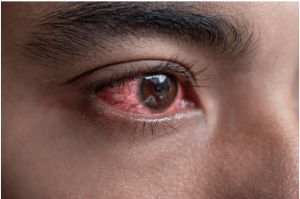Understanding and Managing Pink Eye (Conjunctivitis)
Pink eye, medically known as conjunctivitis, is a common and often highly contagious condition that affects the conjunctiva, the transparent membrane lining the eyelid and covering the white part of the eyeball. It can cause discomfort, redness, and sometimes, if not treated properly, more serious complications.
Identifying Pink Eye
The symptoms of pink eye can vary depending on the cause, which can be viral, bacterial, allergic, or due to irritants. Common signs include:
- Redness in one or both eyes
- Itching, irritation, or a burning sensation
- Discharge that forms a crust during the night, possibly preventing the eye from opening in the morning
- Tearing and a feeling of a foreign body in the eye
- Swollen eyelids and sensitivity to light in severe cases
Diagnosing Pink Eye
A healthcare provider can usually diagnose pink eye based on the patient’s history and symptoms. In some cases, a slit lamp examination or a bacteria culture test may be necessary to determine the exact cause.
Treating Pink Eye
Treatment for pink eye depends on the underlying cause:
- Viral Conjunctivitis: Often clears up on its own. Supportive treatments like cold compresses, eye lubricants, and proper hygiene can alleviate symptoms.
- Bacterial Conjunctivitis: May require antibiotic eye drops or ointments.
- Allergic Conjunctivitis: Treated with antihistamine eye drops to reduce inflammation or steroids in severe cases.
Self-Care Tips
- Use a clean, lint-free cloth soaked in warm water to gently clean away discharge.
- Apply artificial tears to help with dryness and irritation.
- Avoid wearing contact lenses until the infection has cleared.
- Maintain strict hygiene to prevent spreading the infection.
Prevention
Preventing pink eye is largely about maintaining good hygiene:
- Wash your hands frequently, especially before touching your eyes.
- Avoid sharing personal items like makeup, towels, or pillows.
- Protect your eyes from irritants like smoke or chlorine when swimming.
When to See a Specialist
While typical “pink eye” can usually be easily managed, not all pink eyes are a straightforward case of conjunctivitis.
If you experience eye pain, headache, facial rash/swelling, vision changes or symptoms which persist or worsen, it is important to be evaluated by a medical provider or ophthalmologist. Always consult with a healthcare provider for a proper diagnosis and treatment plan.
Disclaimer: This blog post is for informational purposes only and does not constitute medical advice. If you suspect you have pink eye, please consult a healthcare professional.


